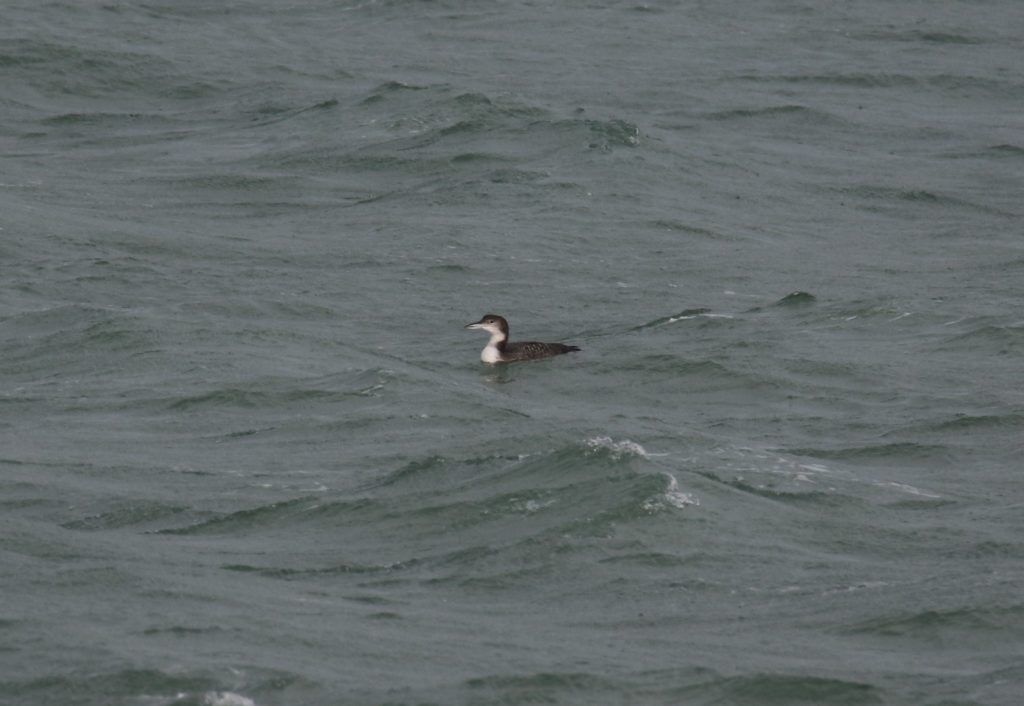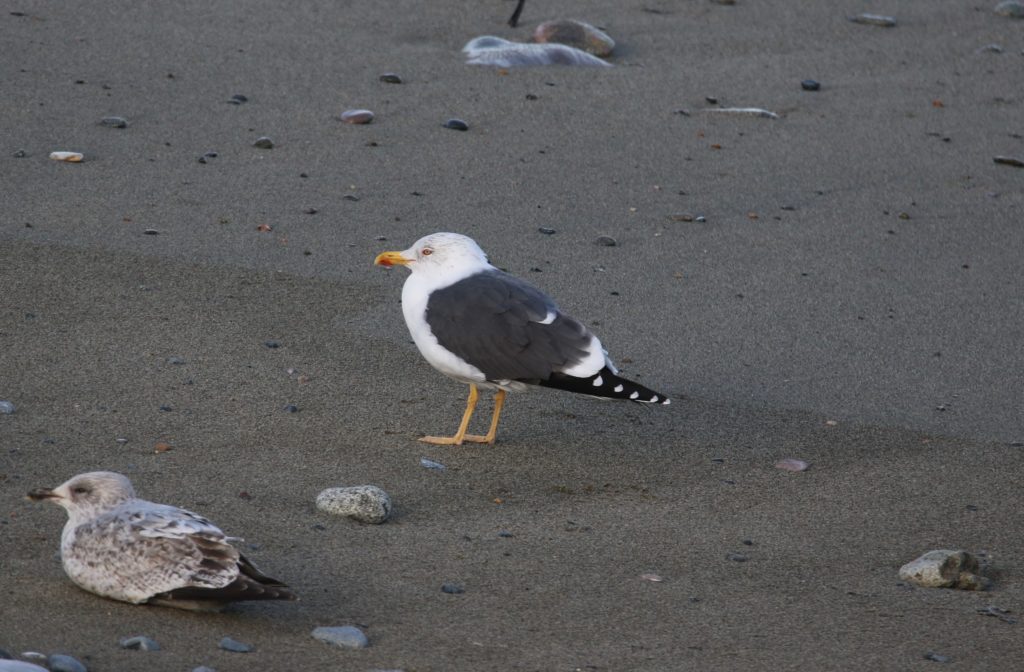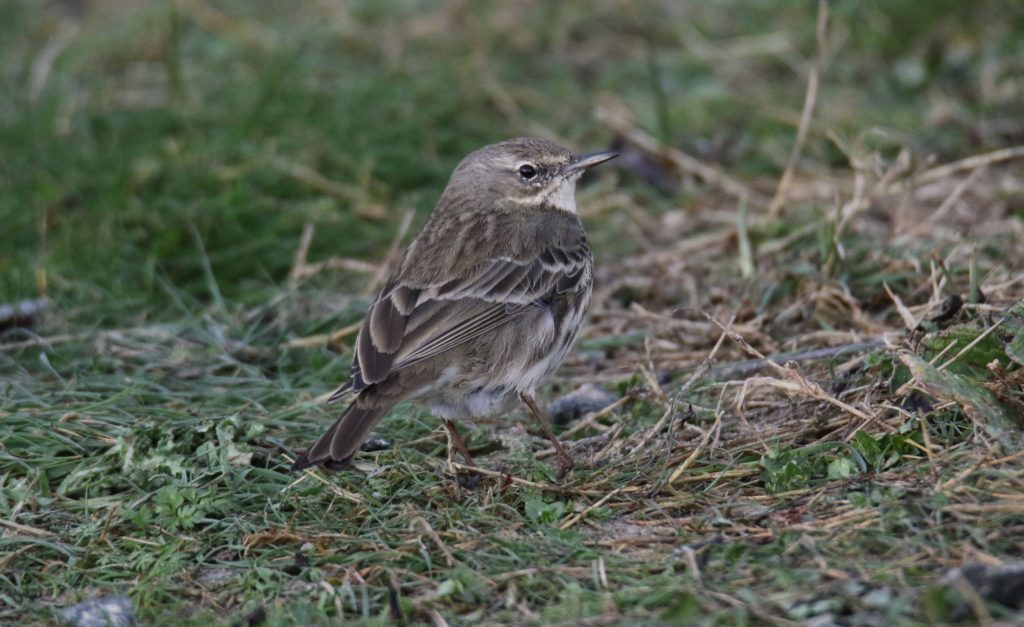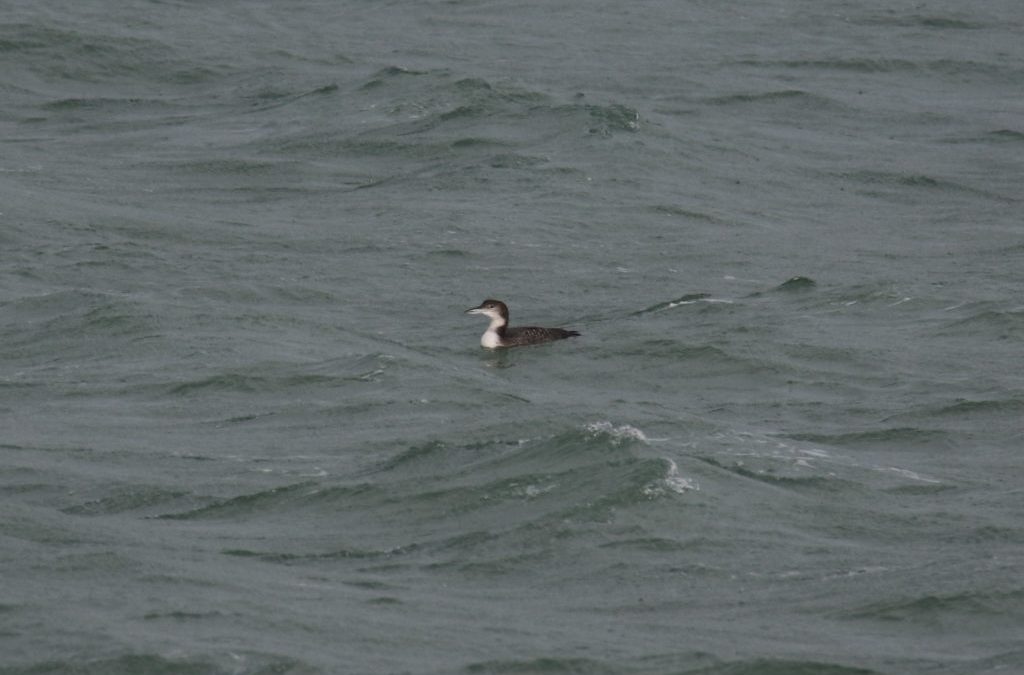The predominantly hard weather has had any self respecting song bird sheltering in dense undergrowth. Fieldwork has involved observing birds being blown by rather than them flying by. During these storms we do tend to record more shoreline waders, numbers of Ringed Plovers, Turnstones and Grey Plovers otherwise passing us by are driven ashore seeking shelter. This is also a great time to look out for less common species avoiding the high seas seeking calmer waters, such as Divers and Grebes. A Great Northern Diver was feeding in Braye Bay (17th) diving for crabs with repeated success. Wader high counts included 30 Ringed Plovers & 5 Grey Plovers (9th) and 12 Turnstone (11th). An unseasonal and vocal Whimbrel flew by Mannez lighthouse (10th) was roosting with 92 Oystercatchers on fort Razz (11th). 2 Mediterranean Gulls were in Braye Bay (14th) and numbers of returning Lesser black backed Gulls have been slowly increasing. Island wide on the 9th crowds of huddled sheltering Herring Gulls totalled 305 birds in keeping with 44 Great black-backed Gulls. A Kingfisher was at the waterworks quarry (9th) and at Corbletts quarry (17th). 14 Rock Pipits were together tucking into insects on the seaweed left behind by the high tide at the north end of Longis bay (11th). 11 Pied Wagtails were on Kiln farm fields (12th) and a Grey Wagtail in St.Anne (17th). Crow numbers acheived the highest the obs have recorded to date with 127 at Kiln farm.

Great Northern Diver – Braye Bay photo JH

Turnstone – Longis Bay photo JH

Lesser black backed Gull – Crabby Bay

Rock Pipit – Longis Bay

